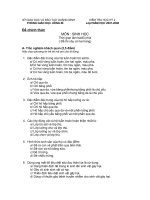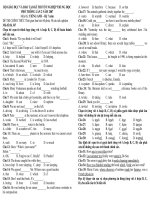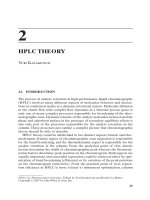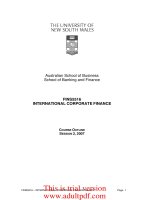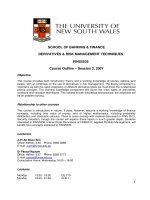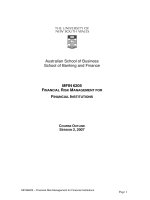Neuroradiology 2 2007
Bạn đang xem bản rút gọn của tài liệu. Xem và tải ngay bản đầy đủ của tài liệu tại đây (1.96 MB, 41 trang )
Neuroradiology 2
Comparing modalities
Graduate Entry Medicine Programme
Daniel Bulte
Objectives
Review imaging modalities
Understand their features
Learn their limitations
See how they can complement each other
Ask more questions
Phrenology
Gall and Spurzheim
(1810)
Functional localization
Brodmann’s anatomical
areas
Important point
We do not only use 10% of our brains!
Functional Localisation
Brain injury and surgical cases
Direct electrode stimulation/recording
PET blood flow and metabolism
EEG scalp potentials from neuronal firing
fMRI blood oxygenation
MEG magnetic field from neuronal firing
Measurement
XRays
CT Scans
MRI/MRS
Ultrasound/Sonography
PET/SPECT
EEG
MEG
NIRS
Early XRay
Advanced CT Imaging
XRay and CT
Uses ionising radiation
Only sees hard tissue without
contrast agents
Fantastic spatial resolution
No spatial distortions
Readily available & “cheap”
No functional/metabolic information
How Tomography Works
y
Oblique
x
How Tomography Works
0
0
0
10
10
10
0
0
0
0
10
10
10
210
210
210
10
10
10
10
10
10
10
210
210
210
10
10
10
10
10
10
10
210
210
210
10
10
10
10
0
0
0
10
10
10
0
0
0
0
0
0
0
10
10
10
0
0
0
0
10
10
10
210
210
210
10
10
10
10
10
10
10
210
210
210
10
10
10
10
10
10
10
210
210
210
10
10
10
10
0
0
0
10
10
10
0
0
0
0
Magnetic Resonance
Imaging
Good spatial resolution
OK temporal resolution
Safe
Readily available
Gives both structural and functional images
Functional measurements are indirect
Can be spatially distorted
Can be used with or without contrast agents
Best with soft tissues
Magnetic Resonance
Spectroscopy MRS
Looks at signals other than H2
A chemical profile of the voxel
Poor spatial resolution
Very poor temporal resolution
Many compounds overlap
Difficult to quantify
Very safe
MRS
Electroencephalography
EEG
EEG
Measures electrical activity directly
Fantastic temporal resolution
Very poor spatial resolution
Very safe (passive)
Limited spatially
Cheap and easy, and portable
Can be difficult to interpret
EEG
Magnetoencephalography
MEG
MEG
Poor spatial resolution, but better
than EEG
Great temporal resolution
Very sensitive, but susceptible to
noise (blinking, breathing etc)
Expensive, not often available
Limited depth profile
Can be difficult to interpret
Very safe (passive)
Direct measurement of activity
MEG
MEG vs EEG
QuickTime™ and a
YUV420 codec decompressor
are needed to see this picture.
Transcranial Doppler TCD
Detecting intracranial stenosis/thrombosis/
occlusion/dissection
Detecting collateral flow secondary to
obstruction proximal to the circle of Willis
Detecting vasospasm in patients with
subarachnoid haemorrhage
Determining hyperaemia in head trauma
Evaluating feeding vessels to arteriovenous
malformations circle of Willis
TCD
